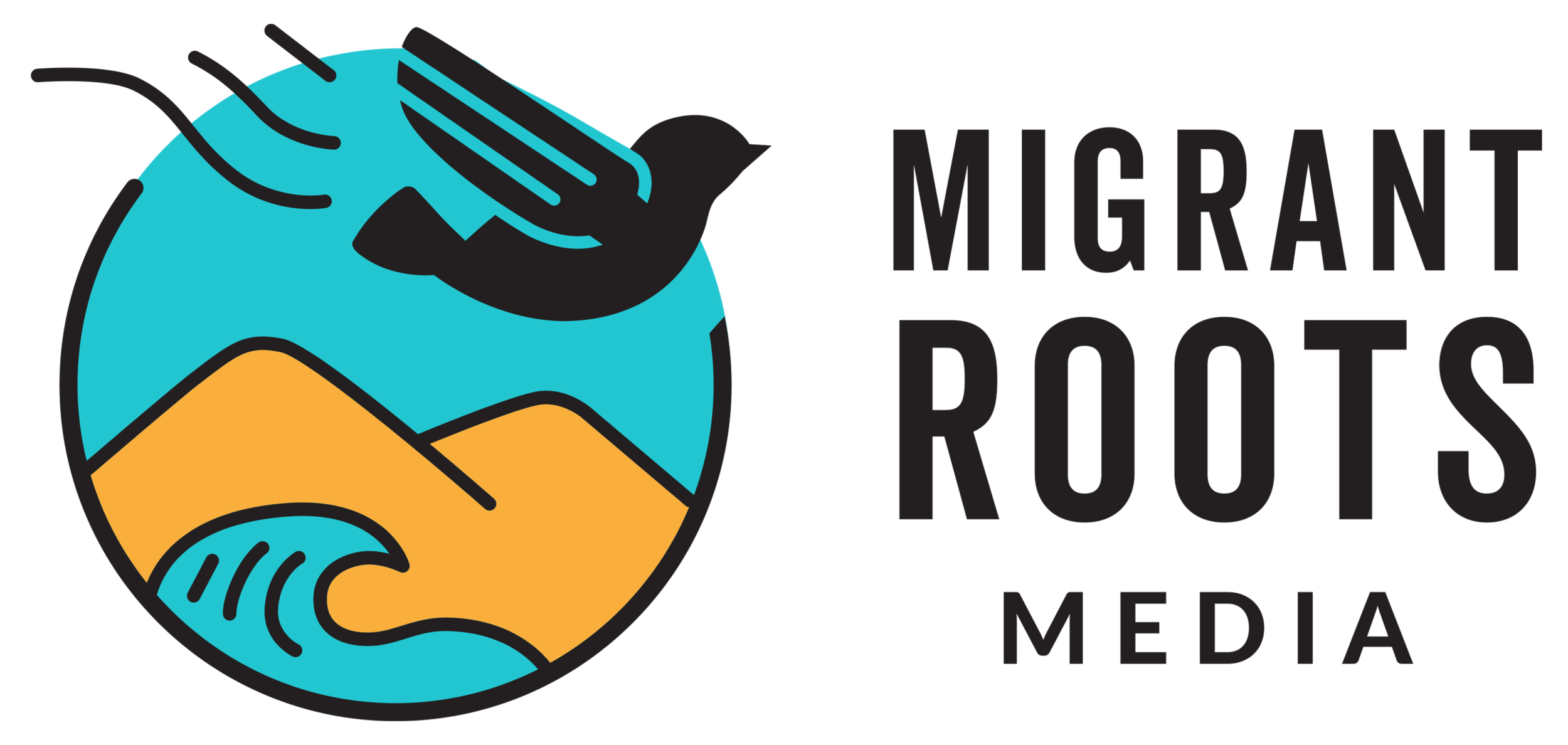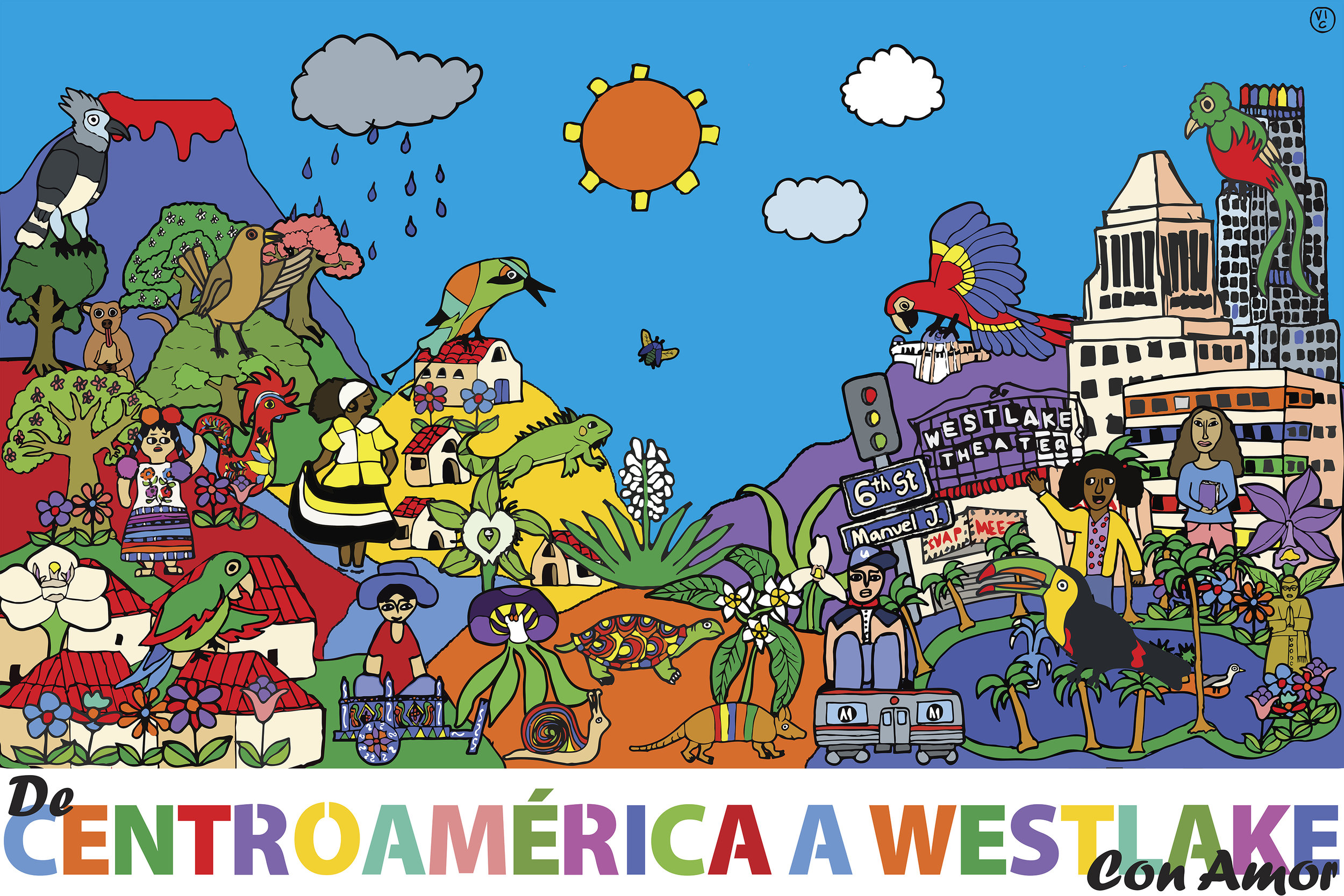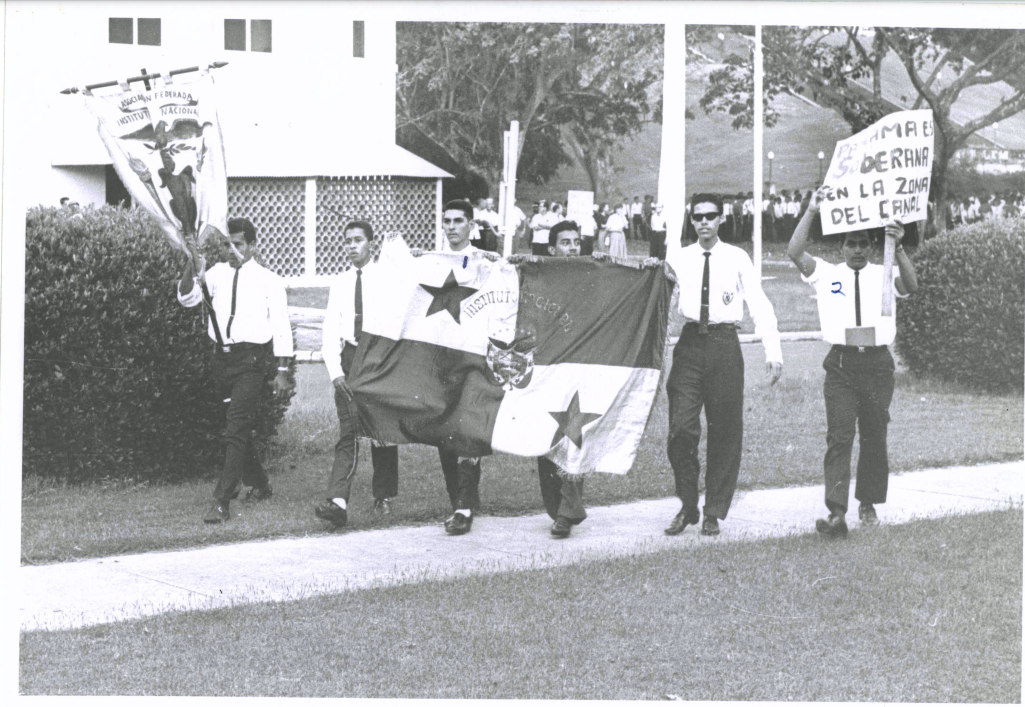We have a duty to resist and defend our communities: Central American scholars condemn recent ICE raids and the criminalization of protesters in Los Angeles

"Terrible things are happening outside. At any time of night and day, poor helpless people are being dragged out of their homes... Families are torn apart; men, women, and children are separated. Children come home from school to find that their parents have disappeared... Everyone is scared."
—Anne Frank, 1943, during the Nazi-German occupation of the Netherlands
Los Angeles Protest against ICE on Saturday, June 8, 2025. Photo courtesy of Rudik Osorio.
As we bear witness to the unrelenting cruelty carried out by U.S. Immigration and Customs Enforcement (ICE) and the Trump administration against our communities, as they continue to kidnap migrants and separate families, we are overwhelmed by the sense of grief, anger, and fear that has collectively consumed the people of Los Angeles. Simultaneously, we are also inspired by the organized resistance largely led by the children of migrants, who are confronting ICE with admirable courage. While many have rightly alluded to the uncanny resemblance of the current moment to what occurred nearly a century ago during the rise of fascist Nazi Germany, we do not need to go that far to make the connections, as there are several examples much closer to home.
In the early 1930s, the threat of fascism in Central America began to take root across the Isthmus as several authoritarian regimes actively targeted women, migrant laborers, Black and Indigenous communities, and “foreign agitators,” often resorting to arbitrary arrests, detentions, deportations, and the forced political exile of many organizers and activists attempting to defend their basic human and civil rights. When these tactics failed to quell resistance, these authoritarian regimes escalated persecution through violent military force, including extrajudicial killings. In some cases, such as in El Salvador and later in Guatemala, it also resulted in genocide and ethnocide. While the current rise of fascism in the United States has not reached this level of repression domestically, the events presently unfolding across the country share alarming similarities to the early egregious acts carried out by fascist regimes, which have been characterized by the unrestricted use of violence, as well as the collective scapegoating of racialized peoples during times of dire economic crisis.
The current onslaught on migrant communities in Los Angeles, including the unjustified deployment of the U.S. National Guard and Marines in collaboration with ICE and the Los Angeles Police Department (LAPD), is another example of this escalation of violence perpetrated on historically racialized communities in the United States. While these attacks are not new and have also previously fixated on Palestinian solidarity organizers (with heightened targeting since 2023) and Black Lives Matter (BLM) activists (particularly during the 2020 George Floyd protests), today, those under the fascist gaze of the Trump administration are the largely Mexican and Central American communities of Southern California, who are actively resisting the ICE raids and defending their communities. The spectacle currently being live-streamed in the news and on social media is a strategic part of the current regime's attempt to not only instill fear in these communities but also to send a clear message to all those opposed that they will be punished for protesting.
As first-generation Central American scholars and community educators raised in Los Angeles, who are also the children of Central American migrants and refugees displaced by U.S.-backed wars, we stand in solidarity with migrant communities across the United States, recognizing that many of these communities are Indigenous to the Américas/Abya Yala/Anáhuac. We support the struggle to build sustainable movements that maintain the dignity of our people as these uprisings spread to the surrounding areas of Southern California as well as to other states across the country.
Shared Struggles in Abolition
In an effort to cultivate a language that advances our shared struggle, we remember the mass uprisings that erupted across the country in the summer of 2020 following the murder of George Floyd by Minneapolis police officer Derek Chauvin. In these mobilizations, racialized communities confronted the violence of the state’s coercive arm (i.e. police, ICE, and Customs and Border Protection). Like today, Trump's response was to deploy the National Guard on protesters, which back then amounted to nearly 62,000 soldiers across 24 states. The Black Lives Matter movement raised awareness about the long history of police murders of the Black community and the continuation of white supremacy embedded in U.S. police enforcement practices. Initially, the protests garnered support from sympathetic U.S. Americans, but once protesters defended themselves against police repression, the media condemned such resistance, prioritizing the value of property over that of people. Similarly, the media is now fixated on the protests and not the state violence perpetrated by ICE.
Los Angeles Protest against ICE on Saturday, June 8, 2025. Photo courtesy of Rudik Osorio.
Today, we see similar tactics being used by the police to repress the resistance to ICE raids and similar scripts vilifying the protesters. The early footage of the protests against ICE showed agents beating, tear-gassing, firing flashbangs, and shooting rubber bullets at protesters and civilians, yet the media was quick to condemn the protesters' self-defense. However, many protesters on the ground took heed of Assata Shakur’s words, "Nobody in the world, nobody in history, has ever gotten their freedom by appealing to the moral sense of the people who were oppressing them." Instead, the people of Los Angeles are demonstrating their defiance to ICE's violence, including by holding protest signs describing ICE's operations as fascist.
When it comes to immigration in the United States, there is a long historical record of anti-immigant policies targeting Latina/o/es, from Mexican Repatriation in the late 1920s–1930s, Operation Wetback in 1953–54, to Operation Gatekeeper and the passage of Proposition 187 in 1994, as well as a long history of resistance, including the historic 2006 Mega Marchas. The protests we are witnessing today are a response to state violence enacted on migrant communities by the bipartisan project of immigration control led by Customs and Border Protection (CBP, founded in 1924), Immigration and Naturalization Service (INS, founded in 1933), and Immigration and Customs Enforcement (ICE, founded in 2003). What we are seeing cannot be simply reduced to a "Democrat versus Republican" issue. Trump inherited a system created by both parties that has enabled him to escalate and continue to further expand the state's immigration enforcement apparatus.
These protests have embraced the call to Abolish ICE, a movement that gained momentum in 2018. Their abolitionist lens includes mutual aid, legal support, and other forms of working in solidarity and accompaniment with individuals in detention. The resistance of the Abolish ICE movement matters because their everyday work, protests, and direct actions contribute to pushing back against ICE and the private corporations profiting from human suffering (i.e. CoreCivic and GEO Group). This includes many reports exposing ICE and CBP medical negligence, human rights violations, and migrant deaths in their custody, as well as successful policy advocacy at the local and federal levels. As the Community Self-defense Coalition in Los Angeles has argued, ICE would not leave our communities if it did not face resistance.
International Solidarity
Thinking beyond the settler-colonial borders of the United States, we also draw connections between the struggle against ICE, the fight for Black Lives, and the international movement for a free Palestine. We recall the mural of George Floyd painted on an Israeli apartheid wall in the occupied West Bank, a courageous act of international solidarity with BLM that invites us to think beyond our settler-colonial nations and unite in a collective struggle against all systems of oppression that seek to eliminate racialized peoples. The current LA uprisings are yet another opportunity to make these connections, demonstrate our solidarity, and demand the abolition of all repressive structures and systems, from Los Angeles to Gaza. As we have witnessed, many youth have worn keffiyehs during protests against ICE while holding Palestinian flags or signs that convey messages of solidarity with Gaza. These acts of solidarity must be uplifted as the people of Gaza are in the midst of a U.S.-sponsored genocide that is being carried out by Israel, making us complicit via our tax dollars.
Los Angeles Protest against ICE on Saturday, June 8, 2025. Photo courtesy of Rudik Osorio.
Simultaneous to the ICE raids, humanitarian aid is being denied in Palestine, people are starving, and the Freedom Flotilla’s Madleen, whose aim was to stop the siege on Gaza, was intercepted by Israel, who kidnapped Swedish environmental activist Greta Thunberg and all those on board. Here at home, Trump has likewise attempted to vilify the resistance for a free Palestine by targeting young people and student protesters, especially international students, by arbitrarily revoking their legal status and freezing visas, thus rendering them undocumented and setting them up as targets for detention and deportation by ICE. The kidnapping and detention of several international students, including Palestinian refugee Mahmoud Khalil, who was targeted based solely on his pro-Palestine activism, unveils yet another layer of Trump's multifaceted attempt to use immigration control and enforcement to stop organized resistance and impose his fascist political agenda. The connections across our movements have never been more glaring than in the current moment, and we must not miss this opportunity to unite in solidarity for our collective liberation.
Solidarity Movements and Sanctuary Spaces: Learning from the 1980s
The current protests and organizing build upon the legacy of movement-building in places like Los Angeles that have been identified as sanctuary cities. Unfortunately, the designation of “sanctuary” for migrants and undocumented people was stripped away when ICE and police officers raided warehouses, entered open businesses in Chinatown at midnight, and allowed the National Guard to disrupt peaceful protests. Messages like “Chinga la migra,” “No One is Illegal on Stolen Land,” and “L.A. hates I.C.E.” were seen at the June 8th Downtown Los Angeles demonstration. These collective messages represent the rage, unity, and hope that communities in Los Angeles hold, as well as emphasize that there will be resistance if people are being illegally kidnapped, separated from their family members, and unlawfully detained.
Los Angeles became a sanctuary city on November 19, 2024. A sanctuary city is categorized as a place that refuses to provide an individual’s immigration status to law enforcement. On May 29, 2025, the Department of Homeland Security (DHS) released a list of sanctuary cities. It claimed that they “protect dangerous criminal illegal aliens from facing consequences and put law enforcement in grave danger.” According to DHS, they are “committed to exposing these lawless jurisdictions to the public and making them accountable for not respecting the rule of law.” On this basis, ICE has justified aggressively targeting numerous neighborhoods in Los Angeles for deportations. As Central American scholars, we emphasize that sanctuary is more than just refusing to provide a person’s immigration status. Sanctuary is connected to solidarity, mutual aid, and keeping the most vulnerable safe from state violence.
At this moment, we are reminded of the 1980s Sanctuary Movement, which gave birth to the protection of Central American political refugees fleeing U.S.-sponsored wars in Guatemala and El Salvador. In the 1980s, amidst U.S. xenophobic policies that systematically denied Central Americans asylum, a growing sanctuary movement sprouted in cities like San Francisco and Los Angeles, areas with an increasing concentration of Central Americans. In defiance of federal law, many churches influenced by liberation theology were willing to take risks and support undocumented people.
Tomb of Saint Óscar Romero de las Américas located in The Metropolitan Cathedral Crypt of San Salvador. Photo by Roxana Bendezú - 2023
In Los Angeles, several key actors were involved in the sanctuary movement, including priests at the Plaza Olvera. For example, Priest Luis Olivares worked with the Mexican American community to open their doors for migrants from Mexico and Central America. A movement of sanctuary efforts grew where churches were working alongside social justice groups like the Committee in Solidarity with the People of El Salvador (CISPES). There were refugee centers like the Central American Refugee Center, which was later renamed the Central American Resource Center (CARECEN) in 1992, after the signing of the Salvadoran Peace Accords, when it transformed into a non-profit social service organization for recent Central American migrants. This organization was created by Central Americans in solidarity with Mexican, white, and African American progressive allies. Clínica Monseñor Romero (named after El Salvador’s Archbishop and now-Saint murdered in 1980), which provided people with much-needed medical care, was also created by diasporic Salvadorans. Those coming as victims of torture and war could receive medical aid as well as counseling services due to the trauma that people were fleeing. El Rescate, also formed in the 1980s, was a hub to support recent Central American migrants. The group was a center for solidarity and education to teach people in Los Angeles about their rights and to provide resources for migrants and asylum seekers. The 1980s Sanctuary Movement was significant for the United States as it brought various ethnic groups together in solidarity to support Central Americans who were being denied refuge and sanctuary under U.S. laws and policies.
While the Sanctuary Movement looks different today, it still follows the same tradition of providing shelter, food, and basic needs to migrants fleeing the often U.S.-sponsored violence and terror from their homelands. For some of us in Los Angeles, we have managed to co-create community spaces, like the People's Café/Memories of El Monte, that serve as sanctuary for individuals who may not feel comfortable or safe attending a protest. Instead, these community spaces are places where we gather to eat meals, check in, and provide “Know Your Rights” information, as well as clothing and other forms of mutual aid to our neighbors. Learning from past social movements and creating our own strategies helps us stay grounded in times of distress and global unrest.
"Sólo el Pueblo Salva al Pueblo"
Los Angeles Protest against ICE on Saturday, June 8, 2025. Photo courtesy of Rudik Osorio.
As Central American women and scholars grounded in Central America's transnational history of solidarity and grassroots organizing, we draw on the strength and inspiration of elders like Salvadoran activist María Guardado, who survived torture during the civil war in El Salvador and still continued to protest, organize, and write revolutionary poetry. Migrating is an act of life, struggle, and social movement. For centuries, our ancestors migrated to survive and connect with other tribes and plants, and to exchange resources. The creation of nation-states imposed borders – divided lines meant to generate divisions between countries – and perpetuated racist ideas to control an exploited population for profit. Today, the ideologies that uphold ICE and the inhumane practice of kidnapping and incarcerating migrants in detention centers are rooted in white supremacy and a growing tendency towards fascism – a phenomenon that is not unique to Nazi Germany, Italy, or the United States, but that also has manifestations in Central America, as we are now witnessing via the authoritarian and dictatorial regime of Nayib Bukele in El Salvador. In order to survive and overcome the escalation of fascist violence that looms over our very livelihoods, we must come together in solidarity with other oppressed nations and racialized peoples. Let us not forget our history of resistance and be misguided into thinking the protesters are the problem. If history has taught us anything, it is that we have a historic duty to resist, to defend our communities. We are inspired by the youth in the streets who are carrying on the legacy of struggle and resistance. ¡Cómo dicen en las calles: solo el pueblo salva al pueblo!
Jennifer A. Cárcamo is a Salvadoran filmmaker and University of California President’s Postdoctoral Fellow at UC Irvine's Chicano/Latino Studies Department. She is currently completing her book, Historias Prohibidas del Istmo: Central American Communists During the Rise of Twentieth Century Fascism, 1920-1940, and is best known for her documentaries Children of the Diaspora: For Peace and Democracy and Eternos Indocumentados: Central American Refugees in the United States, both of which center the lives and struggles of Central American migrants, refugees, and their children. Professional Website: https://jennifercarcamo.com/.
Carla Macal is an interdisciplinary anti-colonial feminist scholar dedicated to community-engaged research addressing the intersections between state violence and intergenerational healing. She is currently a University of California President’s Postdoctoral Fellow at UC San Diego’s Department of Literature. She is working on her book-in-progress, Healing Cartographies: Weaving Transformative Memory across the Hemisphere by GuateMaya Feminist Groups, which follows the oral and embodied testimonies of Guatemalan and Maya women survivors of the 36-year (1960-1996) war and their production of counter-cultural memory.
Alexis N. Meza is an Assistant Professor of Ethnic and Women's Studies at California State University Polytechnic, Pomona. Drawing on community organizing in accompaniment with asylum-seekers as well as the movement to abolish immigrant detention, she co-authored “No Están Solxs: Mourning Migrant Suffering and Death Through Commemorative Art at the U.S.///Mexico Border” in Resistance and Abolition in the Borderlands: Confronting Trump's Reign of Terror (University of Arizona Press, 2024).










